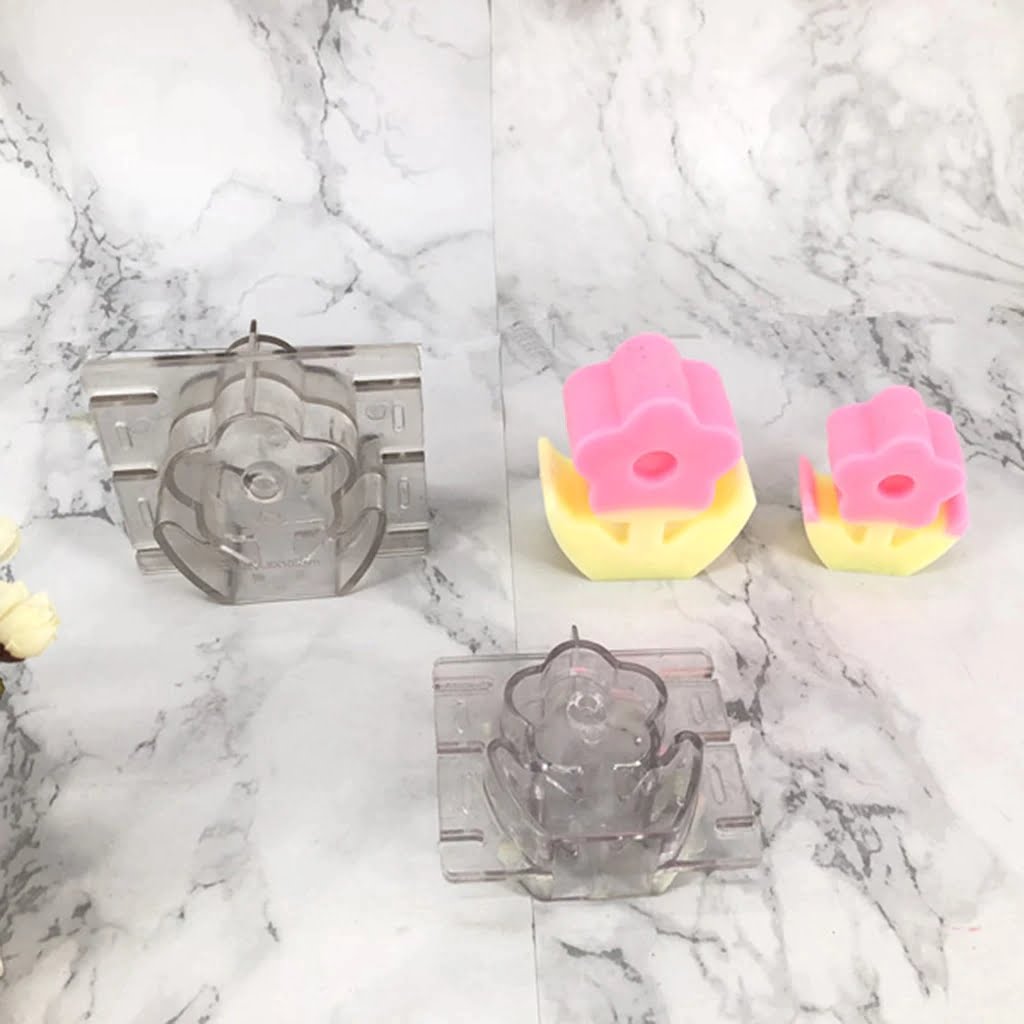Are you wondering how to clean a candle making pot? Keeping your candle making pot clean is essential for maintaining the quality of your candles and ensuring a successful candle making process.
Residue from previous batches can affect the fragrance and appearance of your new candles, so it’s important to regularly clean your pot to avoid contamination. This article will provide you with comprehensive instructions on how to properly clean your candle making pot, as well as tips for maintaining its cleanliness for future use.
Proper cleaning of your candle making pot also helps to prolong its lifespan. Residue buildup can cause damage to the pot over time, so regular maintenance is key to ensuring that it remains in good condition for many more candle making sessions. Whether you are a beginner or an experienced candle maker, understanding the importance of maintaining a clean candle making pot is crucial for producing high-quality candles.
In this article, we will walk through the supplies needed for cleaning, steps to prepare the pot for cleaning, and detailed instructions on various methods for cleaning the pot. From using soap and water to natural cleaning agents like vinegar and baking soda, we’ve got you covered.
Additionally, we’ll provide tips for removing wax residue and techniques for keeping the exterior of the pot clean and shiny. So, let’s dive in and learn how to keep your candle making pot spotless.
Supplies Needed
When it comes to cleaning your candle making pot, having the right supplies is essential to ensure a thorough and effective cleaning process. Before you begin, gather the following supplies to make the task easier and more efficient:
1. Dish soap: A gentle dish soap will help remove any oils or residue from the pot without damaging it.
2. Water: You’ll need plenty of hot water for soaking and rinsing the pot.
3. Soft sponge or cloth: Use a non-abrasive sponge or cloth to avoid scratching the surface of the pot.
4. Paper towels: These will come in handy for drying the pot after cleaning.
5. Vinegar and baking soda (optional): For stubborn residue, having these natural cleaning agents on hand can help break down and remove any leftover wax.
Having these supplies at your disposal will ensure that you are prepared to thoroughly clean your candle making pot without causing any damage.
In addition to these basic supplies, you may also want to consider using a specialized candle wax remover for particularly stubborn residue. These products are designed specifically for removing wax from various surfaces and can be a valuable addition to your cleaning arsenal. By having all the necessary supplies on hand, you’ll be ready to tackle even the toughest cleaning jobs and keep your candle making pot in top condition.
Preparing the Pot
Before starting the cleaning process for your candle making pot, it’s important to take some steps to prepare the pot. This will ensure a thorough and effective cleaning, as well as prolong the life of your equipment. Here are some essential steps to take before you begin cleaning:
- Remove any leftover wax: Use a soft cloth or paper towel to remove as much residual wax from the pot as possible. Be gentle to avoid scratching the surface of the pot.
- Scrape off any hardened residue: If there is any stubborn or hardened wax residue, carefully scrape it off using a plastic scraper or spatula. Take care not to damage the pot while doing this.
- Wipe down the interior: Use a clean cloth dampened with warm water to wipe down the interior of the pot and remove any remaining wax or debris.
Once you have completed these preliminary steps, you can move on to the actual cleaning process using soap and water or other cleaning agents.
Remember that proper preparation of your candle making pot is crucial in maintaining its cleanliness and ensuring that your candles are free from contaminants that could affect their quality. By following these preparatory steps, you can effectively clean your candle making pot and keep it in top condition for future use.
Additionally, taking care of these initial steps will make it easier for you when carrying out more intensive cleaning techniques using vinegar and baking soda if necessary, which we will cover in detail next.
Cleaning With Soap and Water
Cleaning your candle making pot is an essential part of candle making, as it ensures that your candles remain free from contaminants and impurities. A clean pot also helps to maintain the quality and purity of the wax, resulting in better, more consistent candles. Whether you are a beginner or experienced candle maker, knowing how to clean your candle making pot properly is crucial for the success of your candle making endeavors.
To clean your candle making pot, you will need a few supplies. These include dish soap, a soft sponge or cloth, hot water, and a towel for drying. Additionally, having a paper towel or scraper can be helpful for removing any stubborn wax residue from the pot.
Before starting the cleaning process, it is important to prepare the pot properly. This includes ensuring that any remaining wax has cooled and hardened. It is also advisable to remove any wick remnants or debris from the pot before proceeding with the cleaning process. Once these initial steps have been completed, you can move on to cleaning the pot using soap and water.
To begin the cleaning process with soap and water, fill your candle making pot with hot water and add a small amount of dish soap. Use a soft sponge or cloth to gently scrub the interior of the pot, paying special attention to areas where wax residue may be present. Rinse the pot thoroughly with hot water to remove any soap residue. Finally, dry the pot with a towel before storing it for future use.
When following these simple instructions on how to clean your candle making pot using soap and water, you can ensure that your pots remain in good condition for many uses to come. By taking care of this essential tool in your candle making process, you are setting yourself up for successful and enjoyable candle making experiences in the future.
Removing Wax Residue
Once you have finished making your candles, you may find yourself with a pot that is coated in leftover wax residue. It’s important to remove this residue before using the pot for your next candle-making adventure, as it can affect the quality of your new candles. In this section, we will provide you with tips on how to safely and effectively remove any leftover wax from your candle making pot.
The first step in removing wax residue from your candle making pot is to gently heat the pot. You can do this by placing the pot in a warm water bath or using a hair dryer to melt the remaining wax.
Once the wax has softened, use a paper towel or a soft cloth to wipe away as much of the residue as possible. Be sure to dispose of the paper towels properly, as they may still contain flammable wax residue.
For any stubborn wax that remains in the pot, consider using a heat gun on a low setting to melt and remove it. Be careful not to overheat the pot, as this can cause damage to its surface. Once the majority of the wax has been removed, you can proceed with cleaning the pot using soap and water, or natural cleaning agents such as vinegar and baking soda, which we will discuss further in upcoming sections.
In addition to thoroughly cleaning out any leftover wax from your candle making pot, it’s important to ensure that no debris or wick remnants are left behind. This will help maintain the quality of your candles and keep your pot in good condition for future use. By following these tips for safely removing leftover wax from your pot, you can maintain its cleanliness and functionality for many more candle-making sessions to come.
Using Vinegar and Baking Soda
When it comes to keeping your candle making pot clean, using natural cleaning agents like vinegar and baking soda can be incredibly effective. These ingredients are not only safe for the environment, but they also do a great job of breaking down stubborn wax residue, leaving your pot sparkling clean. Here’s a step-by-step guide on how to use vinegar and baking soda to get rid of any build-up in your candle making pot.
Supplies needed:
- White vinegar
- Baking soda
- Soft sponge or cloth
- Hot water
Preparing the pot:
Before you start cleaning with vinegar and baking soda, make sure that the pot has been emptied of any leftover wax and has been wiped clean of any excess debris. This will ensure that the natural cleaning agents can work their magic without any obstruction.
- Create a paste by mixing equal parts of baking soda and water in a small bowl.
- Apply the paste directly onto any areas with stubborn residue in the pot.
- Let the paste sit for about 15 minutes to allow it to penetrate and break down the residue.
- After 15 minutes, pour a small amount of white vinegar onto the affected areas.
- The mixture should begin to fizz as the chemical reaction starts to lift the residue from the surface of the pot.
- Use a soft sponge or cloth to scrub away at the residue, applying gentle pressure as needed.
- Rinse the pot thoroughly with hot water to remove any remaining residue and cleaning solution.
By following these steps, you can effectively clean your candle making pot using natural cleaning agents like vinegar and baking soda, ensuring that it is ready for future use. Remember to dry the pot completely before storing it away, and you’ll be able to maintain its cleanliness for years to come.
Cleaning the Exterior of the Pot
The exterior of your candle making pot is just as important to keep clean as the interior. Not only does it contribute to the overall cleanliness and appearance of your workspace, but a shiny and well-maintained exterior can also make the pot last longer. Here are some techniques for keeping the outside of the pot clean and shiny.
First, before cleaning the exterior of your candle making pot, make sure it has cooled down completely. It’s important to avoid cleaning a hot pot to prevent injury or damage to the surface. Once it’s safely cooled, you can start by wiping down the exterior with a soft cloth or sponge and warm, soapy water. This will help remove any dirt, dust, or residual wax that may have dripped onto the outside of the pot during use.
For tougher stains or residue on the exterior of your pot, you may need to use a specialized metal cleaner or polish. Be sure to read and follow the manufacturer’s instructions for any cleaning products you use to ensure their safe and effective application. After applying these products, buffing the exterior with a dry cloth can help restore its shine and luster.
Finally, once you’ve cleaned and polished the exterior of your candle making pot, consider storing it in a protective cover or bag when not in use. This will help prevent dust and debris from accumulating on its surface between uses, reducing the frequency at which you’ll need to deep-clean the exterior. With these techniques and tips, you can keep both the interior and exterior of your candle making pot in top condition for years to come.
Drying and Storing
Once you have thoroughly cleaned your candle making pot, it is essential to ensure that it is dried and stored properly to prevent contamination and maintain its cleanliness for future use. Proper drying and storage methods will also help prolong the life of your pot, ensuring that it stays in good condition for many more candle making sessions.
Drying the Pot
After washing your candle making pot with soap and water, it is important to dry it thoroughly before storing it. Use a clean towel to wipe away any residual moisture, both inside and out. You can also air dry the pot by leaving it upside down on a drying rack or a clean towel to allow any remaining water to evaporate. Make sure there is no moisture trapped in any crevices or handles of the pot.
Storing the Pot
When it comes to storing your candle making pot, make sure it is completely dry before putting it away. Store the pot in a cool, dry place where it is not exposed to direct sunlight or extreme temperatures. If possible, wrap the pot in a clean cloth or tissue paper to protect it from dust and scratches while in storage.
Preventing Contamination
To prevent contamination of your cleaned pot, make sure that it is stored away from any other chemicals or substances that could potentially come into contact with its surface. Keep it separate from other kitchenware or craft supplies to maintain its cleanliness until you are ready to use it again for your next candle making project.
By following these proper drying and storing methods, you can ensure that your candle making pot remains clean and ready for use whenever you need it. Taking care of your equipment in this way will not only extend its lifespan but also contribute to maintaining the quality of your homemade candles.
Maintenance Tips
In conclusion, keeping your candle making pot clean is essential for producing high-quality candles and prolonging the life of your equipment. By following the outlined steps and using the necessary supplies, you can ensure that your pot remains in top condition for future use. Proper maintenance of your candle making pot not only contributes to a better end product but also saves you time and effort in the long run.
Once you have thoroughly cleaned your pot using soap and water, it’s important to pay attention to any leftover wax residue. By carefully removing any remaining wax and utilizing natural cleaning agents such as vinegar and baking soda, you can effectively eliminate stubborn residue without damaging the pot. Additionally, don’t forget to clean the exterior of the pot to keep it shiny and presentable.
After cleaning, make sure to dry the pot completely before storing it. Proper storage techniques are essential for preventing contamination and maintaining the cleanliness of the pot for future use. By adhering to these maintenance tips, you can prolong the life of your candle making pot and continue creating beautiful candles with ease. Remember that regular cleaning and maintenance will not only extend the lifespan of your equipment but also contribute to better results in your candle making endeavors.
Frequently Asked Questions
How Do You Clean Candle Wax Out of a Pot?
Cleaning candle wax out of a pot can be done by placing the pot in the freezer for a few hours. Once the wax is frozen, it can be easily chipped or scraped out of the pot with a butter knife or similar tool.
Any remaining wax residue can be removed by wiping with a paper towel or cloth dampened with warm, soapy water.
How Do You Clean a Wax Melting Pot?
To clean a wax melting pot, start by allowing any leftover wax to harden and then carefully remove it from the pot. Next, wipe out as much residue as possible with a paper towel before using a warm, soapy cloth to clean the interior thoroughly.
For stubborn wax buildup, heating the melting pot slightly can soften the residue and make it easier to wipe away.
How Do You Clean Out a Candle Container?
Cleaning out a candle container involves first removing any remaining wax and wick remnants from the container. This can often be achieved by placing the container in the freezer to allow the leftover wax to harden for easy removal.
After that, washing the container with hot, soapy water and scrubbing gently should help remove any lingering residue. Using a little vinegar on tough spots can also assist in getting them clean again.

Welcome to my candle making blog! In this blog, I will be sharing my tips and tricks for making candles. I will also be sharing some of my favorite recipes.





